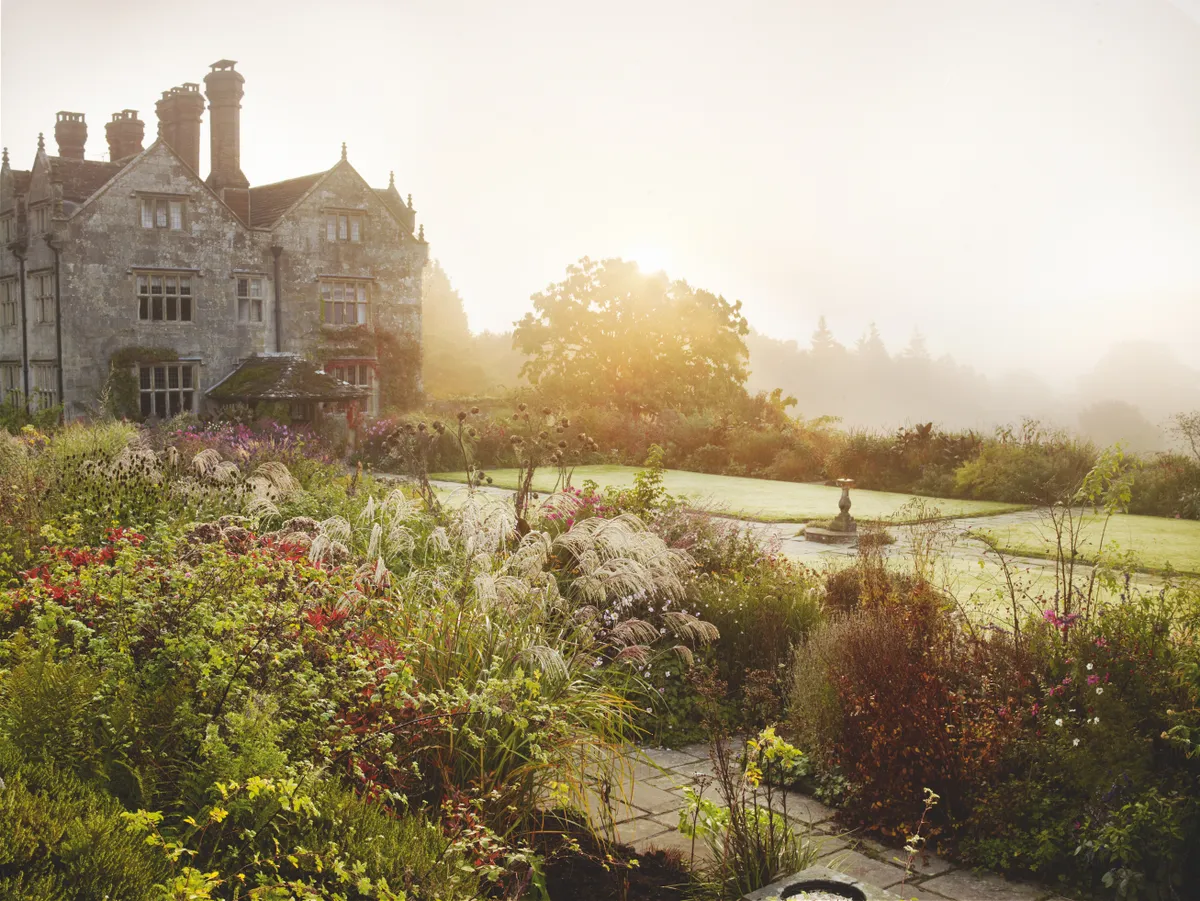The apple orchard at Gravetye Manor dates back to the 1890s when the charismatic garden writer William Robinson first moved to Gravetye. The sheltered, two-acre, south-facing slope is quite protected from frosts and cold winds and warms up in the summer to ripen some amazing apples. A few heritage apple varieties still remain from that time, mainly 'Blenheim Orange' and a few 'Crawley Beauty' but as part of the garden restoration project, head gardener Tom Coward planted a new generation of apple trees.

The harvest starts in late August with apple varieties like 'Discovery' and runs deep into November, with 'Braeburn' probably being the last. October is the peak of the apple season. Most of the cultivars ripen around the second or third week of October and the gardeners head out to deal with the wonderful glut of apples.
Every season has its joys in the garden, but if I had to pick a month it would be October...every drop of sunshine feels like the precious last sip from the bottle and best of all, this is the peak of the apple season
Head gardener, Tom Coward
The apple orchard at Gravetye is designed as a wild garden and organised totally differently to commercial production. Instead of straight rows of dwarf trees, apple trees are spaced erratically, and interplanted with thousands of naturalised bulbs. Each cultivar is grafted on vigorous and semi-vigorous rootstocks, so the trees will become tall, majestic specimens, trained into traditional, open-centered, vase-shaped trees. Fruit from the trees is used in the kitchens.
Here head gardener Tom Coward gives his top tips for growing apples.
Top tips for growing apples

- Apples need full sun to grow well, but cookers and early cultivars can take a little shade. Frost pockets and windy, exposed sites are best avoided and all apples hate getting waterlogged.
- Decide how you’ll use the fruit before planting. Large orchard trees work well in a wild garden and produce lots of fruit, but it can be a lot of work to deal with big crops. Espaliers or cordons look smart and produce the best-quality fruit from the smallest space but take a lot of work to do well.
- Take time to research and taste fruit. Many gardens and nurseries have apple days, which are a perfect opportunity to find cultivars that are special to you or your area.
- Take time to decide on the best rootstock for your tree as this will govern its ultimate height and vigour. Dwarf rootstocks are more manageable and can fit into smaller gardens but may need care, such as staking and weeding. More vigorous rootstocks will give you a much bigger tree, with bigger crops that will live for much longer.
- Control the environment. Young apples hate having their feet grassed over, and if the soil is kept open and you mulch around the tree’s roots they have a much better chance of establishing. We control weeds around our trees and give them a thick layer of home-made compost each year.
Useful information
Gravetye Manor Hotel & Restaurant, Vowels Lane, West Hoathly, West Sussex RH19 4LJ.
Tel: 01342 810567. Web: gravetyemanor.co.uk






